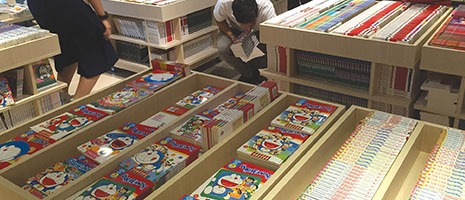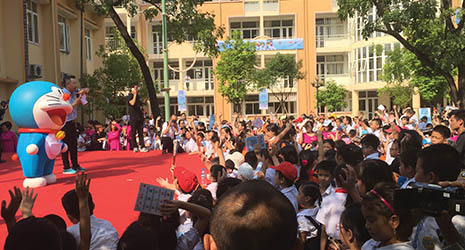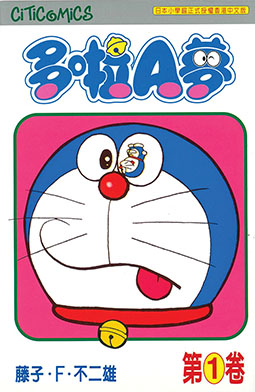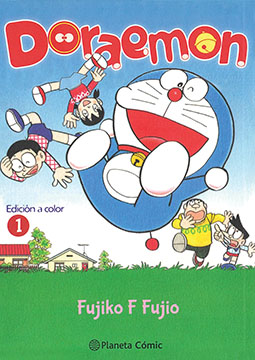Home > Highlighting JAPAN > Highlighting Japan February 2019 > Sharing Japanese Literature with the World
Highlighting JAPAN


The Little Robot Still Enchanting Fans Worldwide
A wide variety of readers across ages, national borders and languages have loved the Japanese manga series Doraemon since it first appeared fifty years ago. The little robot cat is so popular outside Japan that the manga series has been translated into a dozen languages.
Nobita Nobi is a boy who struggles with everything from schoolwork to sports and friendships. Naturally this is a source of frustration for his mother, who scolds Nobita daily. But one day Doraemon—an earless robot cat traveling back in a time machine from the twenty-second century—jumps out of Nobita’s desk drawer and changes his life.
A science-fiction manga series for children, Doraemon is the representative work of Japanese manga artist Fujiko F Fujio (the pen name of Hiroshi Fujimoto). The manga storyline follows Nobita and his friends, who overcome challenges in their everyday lives aided by the amazing futuristic gadgets that Doraemon pulls out of his “four-dimensional pocket.” Since it was first published in 1970, the series has been adapted into an anime series as well as films. Over the past five decades, Doraemon has gained numerous fans both within and outside Japan. The series has been translated into twelve different languages and published in seventeen countries, and the anime series has been broadcast in fifty-five countries.
Translated Doraemon manga are particularly popular in Asia. “In particular, Vietnamese fans’ love of Doraemon is unprecedented,” says Mitsuru Saito, chief producer of international media at publisher house Shogakukan. Even before Shogakukan and their counterpart in Vietnam concluded the official licensing contract, Doraemon was already famous in Vietnam due to unauthorized copies. Fujio opted not to receive royalties accrued from this official licensing, requesting instead that the money be spent on promoting education for children who wish to learn. The Doraemon Scholarship Fund, founded to honor Fujio’s wishes, has allowed over ten thousand Vietnamese children to pursue their education.
When Doraemon—now a traffic safety mascot throughout Vietnam—appears at schools, children welcome him enthusiastically. The Doraemon series occupies a third of the manga section in local bookstores.
“The Doraemon manga series was originally created for magazines that Shogakukan used to publish for school-aged children, so the character is like a friend to young readers,” says Saito, explaining the reason for the character’s celebrity and popularity. “The simple and easy-to-understand artwork, the fun plots where Doraemon makes children’s innocent wishes and dreams come true using his gadgets, and the gentle and encouraging worldview that encompasses the characters are universally appreciated, going beyond generations and national borders.”
As the publisher responsible for preserving the original artwork from the manga series, “it is Shogakukan’s wish to preserve the manga’s form and value as it is, and continue to pass it on to future generations,” Saito says. However, they continue to improve the quality of their publication. For instance, in pursuit of better picture quality, they renewed the printing films for the original volumes of the series.
“We’ll keep sharing Doraemon manga with the world,” Saito says. “While it may have a long history, we want to continue to emphasize the appeal of this wonderful, timeless work.” Thanks to the efforts of the publisher that took over Fujio’s creative philosophy, through the pages of manga Doraemon will continue to be a trusted friend to children for generations while staying true to himself.
© 2009 Cabinet Office, Government of Japan








